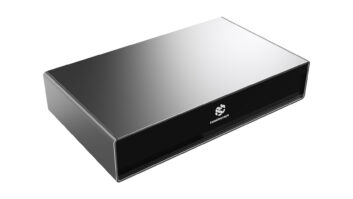Although a year earlier, the fanfare for the launch of DVD was dampened by copy-protection delays, 1997 was when almost everything came together to allow a format launch.
In hindsight, it seems ridiculous that the product that would go on to register the most successful consumer electronics launch in history would generate so much uncertainty — some detractors felt the format would suffer the same fate as the laser disc.
Far from a detractor, Warner Home Video, one of the contributors to the format’s development, threatened to drop support for DVD software in the early stages of the rollout if a concerted marketing effort wasn’t put forth from CE manufacturers and software producers alike. Although the statement was just saber rattling, it did point out the nervousness in the industry and the need for success.
For several years prior to the introduction, sales of analog television and video equipment were in steady decline.
The then-called Consumer Electronics Manufacturers Association (CEMA) reported that 1997’s CE factory sales rose 5.2 percent over the prior year to top $72.02 billion. However, sales of video products fell 4.5 percent to $14.5 billion, despite the inclusion of the first DVD players. CEMA said 350,000 DVD players were sold in 1997 worth an estimated $170 million.
Samsung was first out of the gate in early February with a $699 “high-end” DVD player, followed shortly thereafter by Toshiba, Pioneer, Sony and others.
Following close on the heels of the DVD rollout was a plan to inaugurate the first players using a controversial pay-per-view DVD system called Divx. Developed and championed by CE retail giant Circuit City, it proposed the use of special DVD movies that would restrict playback to 48-hour viewing windows, requiring a $4.99 payment to unlock titles for playback. Zenith and RCA had pledged manufacturing support for the players that were due to ship in April of 1998.
The market for digital still cameras gained momentum as more top-tier manufacturers like Panasonic entered the fray, and the first models with removable Flash memory cartridges appeared on shelves. A format war of sorts began, when Toshiba introduced its Solid State Floppy Disk (SSFDC) format to take on the established Compact Flash rival. Meanwhile, Intel entered the field with its Miniature Card system while Iomega attempted to apply its Zip technology to a format known as n*hand.
Also that year, competition in the direct-to-home satellite field intensified as EchoStar briefly explored merging its DISH Network into a new Sky satellite service with proposed partner Rupert Murdoch, chairman of News Corp. Disagreements between the parties eventually prevented the consummation of that marriage.
Meanwhile, upstart satellite TV service AlphaStar went dark as its Canadian parent Tee-Comm failed to come up with a bailout plan to cover its mounting debt.
Much was going on at TWICE as well. The company started the year off by entering the Internet age with its first live coverage of CES from the recently launched www.twice.com Web site, following a test period in 1996. TWICE also announced a strategic alliance with consumer-focused Web site e-town.
The print edition of the paper got a new look with a redesign that altered the company’s logo for the first time in 11 years.








